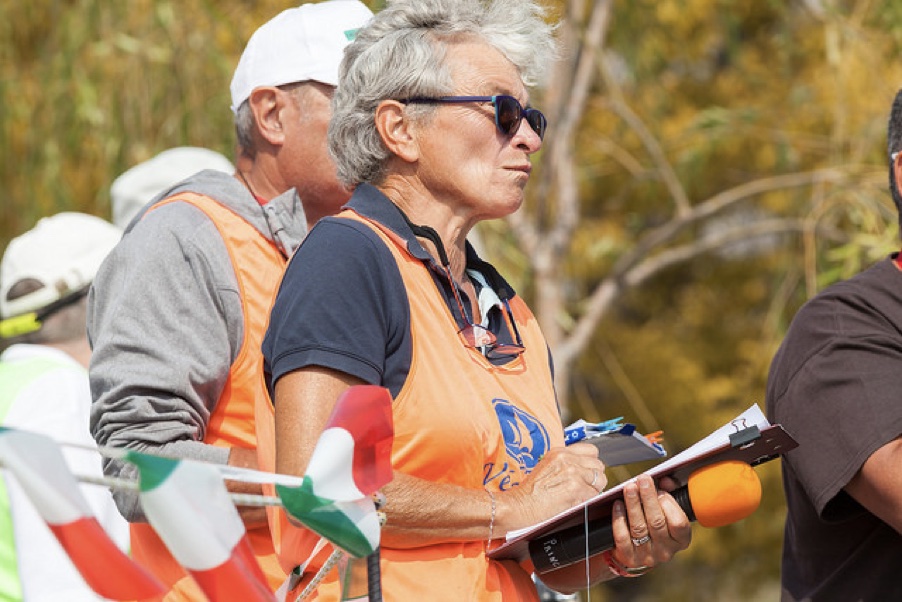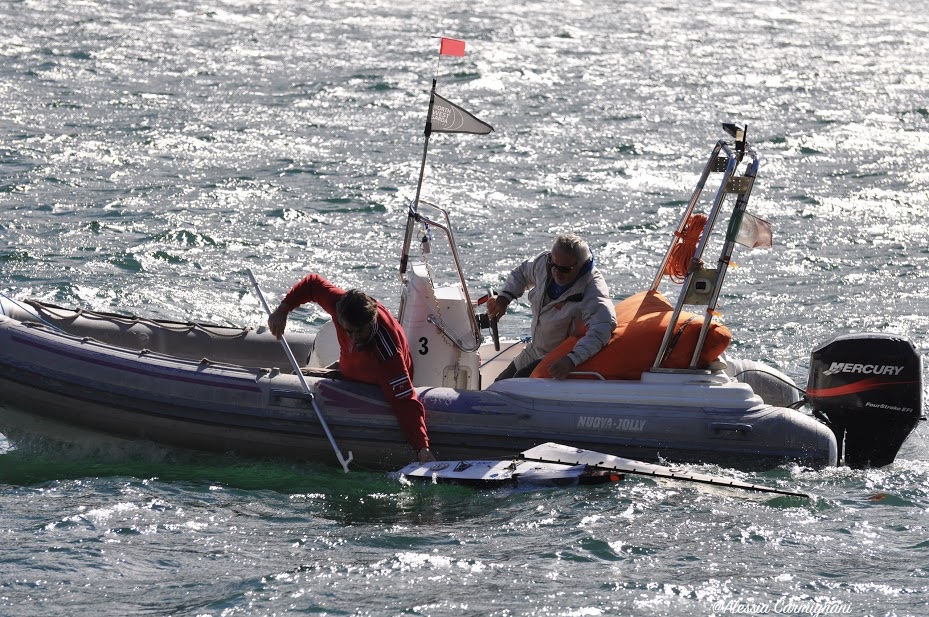1. OBJECTIVE
At the conclusion of this module, you will be familiar with the tasks that are required of the Race Officer once the race has commenced until the race concludes.
2. REFERENCES
For this module, you will need access to the current versions of the following references:
- Racing Rules of Sailing 2021 – 2024 (RRS)
- NZRYA Race Management Manual (NZRYA RMM)
- NZRYA Standard Notice of Race (NZRYA SNOR)
- NZRYA Standard Sailing Instructions (NZRYA SSI)
- Heat Management System (HMS)
3. SUGGESTED READING
You should read the following and any other section to aid your understanding for this module:
- Racing Rules of Sailing
- Part 3: Conduct of a Race
- 35: Race Time Limit and Scores
- Part 4: Over Requirements When Racing
- 41: Outside Help
- Appendix E: Radio Sailing Racing Rules
- E 4.2: Outside Help
- Part 3: Conduct of a Race
- NZRYA Race Management Manual
- RaceManagement Policy
- 3: Times / Timing / Changes in Schedule
- Job Descriptions: Race Officer
- 10: Behaviour
- Job Description: Guidelines for Observers
- Job Description: Boat Driver’s Information
- Principles of Sportsmanship and Fair Play
- RaceManagement Policy
- NZRYA Standard Sailing Instructions
- 6: Launching and Control Area
- 6.4: Outside Help
- 7: Rescue Boat
- 10: Time Limit and Time Out Limit
- 6: Launching and Control Area
- Heat Management System
- 2.2: Time Out Limit
4. DURING THE RACE
The tasks that the Race Officer is expected to perform will vary according to the number of staff available at the regatta being managed. Following is a list of tasks that may need to be covered:
- Act as the Start line Judge.
- Oversee the Race Committee members.
- Act as an Observer.
- Manage boat rescue and recovery.
- Manage the behaviour of the competitors.
- Give consideration to the Time Limit and Time-out Limit for the race.
- Call the finishing positions.
As you can see, there are plenty of things to manage, so having assistance in the form of volunteers becomes important. We will study the Start and Finish line in greater detail in specific modules, so let’s look at the other tasks in more detail.

5. OVERSEE YOUR RACE COMMITTEE
The primary role of the Race Officer is to coordinate the day’s sailing and supervise other staff members who are assisting. The Race Officer is an on-water-manager, who lets his team get on with their jobs with limited interference. The Race Officer considers the bigger picture and maintains an overview of what goes on around the entire course. A good comparison when considering the role is to compare them with a police officer within the judicial system.
The size of the regatta and number of volunteers available will influence the size and makeup of the Race Management Committee and some members may have to perform two or more roles.
6. ACT AS AN OBSERVER
If the Race Officer observes a breach of the rules, he may take the matter to protest, but only the Protest Committee may take an action that worsens a boat’s score. The RO may call contact between boats or with marks, but has no powers to direct an individual boat to undertake a penalty as this would be considered an action that worsened a boat’s score.
7. MANAGE BOAT RESCUE AND RECOVERY
The Boat Driver is under the direction of the Race Officer. In the event of a boat losing control or sinking, the Race Officer must make decisions in relation to the rescue and recovery of that boat. There may be times when the incapacitated boat is in no danger, and rescuing the boat may cause more interference to other competitors than leaving it until the race has concluded.
On the other hand, if a boat is taking water, and in danger of sinking, the Race Officer may need to direct the Boat Driver to make haste and rescue the boat before it is lost below the surface, so careful judgement calls are required. At all times, efforts should be made to avoid interfering with boats still racing.

8. MANAGE THE BEHAVIOUR OF COMPETITORS
Sailing is a self-policing sport, but the enforcement of rules 2 and 69 is the responsibility of all those involved – competitors and race officials alike. Allowing unacceptable behaviour to go unchecked is the same as condoning it and does not protect those sailors who have chosen to compete within the rules. The promotion of fair play and sportsmanship is the responsibility of all those involved in our sport.
All RC racing is to be conducted under the RRS Basic Principles. All competitors are to abide by the Principles of Sportsmanship and Fair Play detailed in the NZRYA Race Management Manual. NZRYA supports competitive racing but does not condone abuse, bullying or harassing of other competitors or the use of unsavoury language.
Skippers involved in an incident may argue between themselves for an extended period of time with the aim that it will all become “too hard” to resolve and result in neither of them doing a penalty. This behaviour is against both the intent and spirit of the RRS in general and RRS 2 in particular. The Race Officer should make every effort, which may include protesting both boats, to stop this practice.
Under the terms of the NZRYA Standard Sailing Instructions, the Race Officer may reprimand an offending skipper or may offer a competitor or competitors a two-turns on-the -pot penalty to avoid a protest hearing. However the Race Officer is not obliged to make this offer nor is a competitor obliged to accept it, in which case the Race Officer is to protest the boat and a protest hearing shall proceed.


A behaviour penalty does not imply that a boat was at fault in a particular incident, only that the skipper’s behaviour was unacceptable. This penalty does not prevent a skipper from protesting another boat under the relevant rule of the RRS.
The RO may deem the offending skipper’s actions a breach of sportsmanship or misconduct and apply the relevant rules. These may include initiating a Rule 2 protest or, depending on the severity of the offence, form a Protest Committee to determine if a Rule 69 hearing is appropriate.
Following the imposition of any on-the-water penalty, the RO is to critically observe a competitor’s continuing behaviour. Any escalation of misconduct, poor sportsmanship or dissent will be penalised again as a separate incident.
9. TIMING THE RACE
The job of timing the heat or race may be delegated to the Finish line recorder, or Scorer. Alternatively, the Race Officer may decide to keep time themselves.
Time Limit
The Time Limit is the time the first boat has to sail the course and finish. For NZRYA ranking events, this time has been set as 30 minutes in the Standard Sailing Instructions.
Time-Out limit
The Time-Out Limit is the available time after the first boat finishes for the remaining boats to complete the course and has been set at 5 minutes. For multi-fleet events, at the expiry of the Time-Out Limit:
- If 4 or fewer boats are still racing, they shall be recorded according to SI.
- If more than 4 four boats are still racing, the Time-Out Limit shall be extended until only four boats remain racing, at which time the RO shall give two sound signals and call time. Boats shall be recorded DNF, RET, OCS, DNS, in that order. DNF boats still racing will be recorded and scored in accordance with their place on the water.
In multi-fleet racing under HMS, there is no time-out limit for race one and all boats are to be allowed to finish provided they have started before the first boat finishes.
If it becomes apparent that boats may be scored on the water, the finisher should record the order these boats round the last mark. This can be referred to if there is any doubt of the boat’s position when time is called.


The time keeper shall record the time the first boat finishes as this is the starting point for the Time- Out Limit. The time the last boat finishes should also be recorded, as it may be required in determining if a protest or request for redress is valid.
END OF MODULE 5
